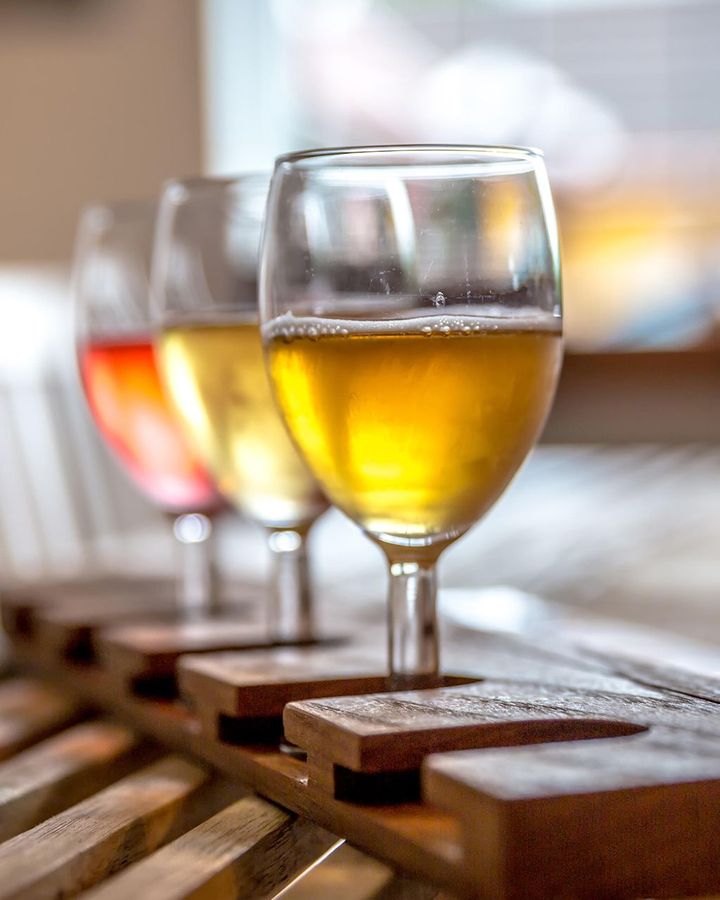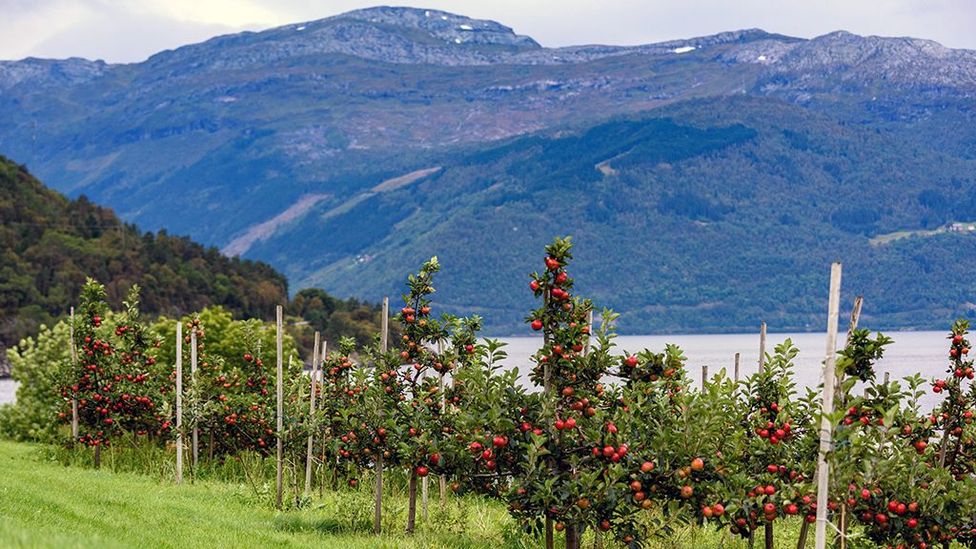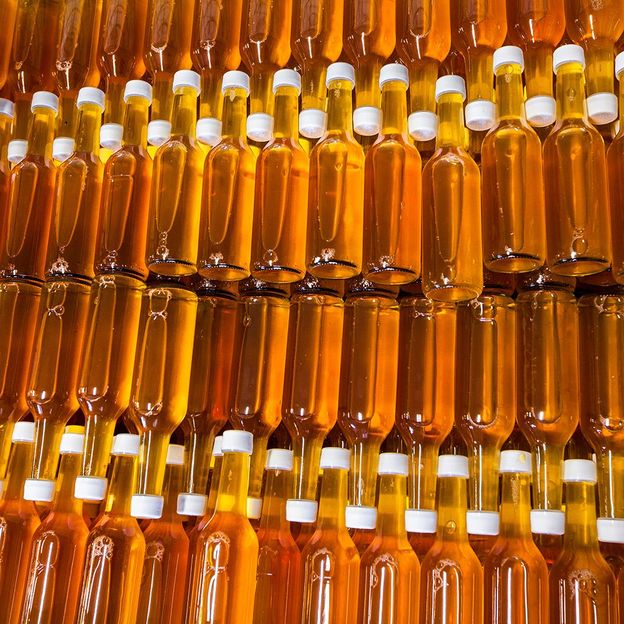There’s a belief that some form of cider was made by Vikings in Norway, and today, its growing popularity has people convinced it’s the country’s national drink.
“Now, I want you to be opened minded,” said Anne Gunn Rosvold, a food tour guide with Bergen Base Camp in Bergen, a city along the southwestern Fjord region of Norway. “Because you probably don’t expect to drink this in Norway, but I am going to let you try Norwegian cider.”
Rosvold would be right. Cider, made from fermented apple juice, is not something I’d expect the Norwegians to be drinking – it’s more common in the British Isles and coastal parts of France, particularly in Normandy. But as she explained, it has been part of the culture for a while, in fact – possibly since the time of the Vikings.
The first recorded production of cider dates back to the Roman Empire, when it was made from native European crab apples, which grew wild throughout the continent. The definitive origin of this fizzy alcoholic drink is disputed, however. Some claim the Celtic Britons invented the drink after the Romans introduced the cultivation of crab apples around 50 CE, but others believe that some apple-based drinks were made long before that.

Cider has been part of Norwegian culture possibly since the time of the Vikings (Credit: Leonardo Spencer/Alamy)
“Officially, cider was introduced from England by monks in the Middle Ages,” Rosvold explained, “but there is a belief that some form of cider as a drink was made even by the Vikings, because they believed apples to have special God powers.”
In popular Norse mythology, the Goddess Idunn supplied apples to the Gods to preserve their youth and immortality. Without Idunn and her apples, the Gods of Åsgård would face threats of aging and death. As a symbol for life, fertility and knowledge, it is no wonder that this humble fruit had such a place in history.
The Vikings regarded apples as a treasure. In 1904, a Viking Queen was found in a burial mound in Tønsberg, Norway’s oldest city, buried with a basket of wild crab apples and the Oseberg Viking ship, among other artefacts. The ship is believed to be from the 9th Century and is on display at Museum of the Viking Age in Oslo.
Native European crab apples would have been available to the Vikings through foraging, and “with access to apples, there is no doubt that the Vikings definitely made things with apples,” explained Ellen Marie Naess, an archaeologist and lecturer from Oslo’s Museum of Cultural History.
“We know the Vikings loved to drink alcohol, and it is likely they made something similar to cider with the apples. But the apples they had were the native crab apples, and they are not very good, so the Vikings would have used honey to sweeten it. Although as soon as you put honey in, it becomes mead, not cider, technically.”
The first recorded production of cider was made from native European crab apples (Credit: Matthew Taylor/Alamy)
Could they have also made something without honey that could be classified as cider? “Probably. We don’t know for sure,” said Naess.
Although the idea of Vikings making cider is only a probability, there’s proof that cider was produced and sold as early as the 13th Century in Norway, when Cistercian monks who immigrated from England planted and introduced the cultivation of apples in the Hardangerfjord region. They taught fjord farmers how to grow and maintain the orchards, kick-starting a passion for apple products, and among them was the celebrated cider. Little did they know that they had unintentionally chosen one of the best spots in the country for this task.
The microclimate of the fjords turned out to be ideal for apple cultivation: 40% of all Norwegian fruit today is grown in this region. The apples are known to be so good that the award-winning cider made from Hardanger is considered to be the “Champagne of apple cider“, and was granted Protected Geographical Indication status in 2009, a European food and drink quality label that protects a product of heritage from being copied outside of its production geography.
Cider remained popular for many centuries, until Norway placed stricter laws against the sale of alcohol in 1921 to curb alcoholism. The country banned private production and sales of alcohol, and it created a government owned monopoly of the market called Vinmonopolet.
Cistercian monks introduced the cultivation of apples in the Hardangerfjord region (Credit: Alf Jacob Nilsen/Alamy)
The Vinmonopolet controlled the sales and production of any beverage with alcoholic content over 4.95%. This had a big impact on the cider industry, as cider generally contained a higher percentage of alcohol. Eventually, the population lost interest, although the idea that cider became unpopular might not have been all Vinmonopolet’s doing.
“Even before the Vinmonopolet, ciders grew out-of-date, with more people leaning towards beers, mostly because crab apples were not particularly nice even after being made into cider,” said Naess. “But cider is definitely making a comeback, and it is good! Even I am surprised!”
And that brings us back to the surprise taste of Norwegian cider. Recognising the popularity of the homegrown cider industry, since 2016, Vinmonopolet has relaxed their rules and allowed the producers to sell their cider with alcoholic content up to 22% directly to consumers, allowing more choices and flexibility in buying alcohol, helping to resurrect the long hibernating cider industry.
With the increased cultivation of different apple varieties along the coast of Western Norway (not just in the Hardangerfjord region), young producers have been stirring up a cider revolution, using traditional knowledge and methods with a mix of creativity to create fresh new tastes in cider.
Many Norwegian regions, including Hardangerfjord, produce bottles of prized cider (Credit: Günter Grüner/Alamy)
With this newfound enthusiasm, Norwegian cider continues to gain status, with gold and silver wins at various international cider awards, the most recent being the Nordic International Cider Awards held in Bergen in 2022. It’s proof that the heritage of working with apples, even if it cannot be credited entirely to Norway’s Viking roots, has been awakened.
“In the countryside, cider is definitely considered the drink of Norway,” said Arita Åkre, owner of Måge Farm and co-owner of Åkre farm with husband Gjermund Åkre. The couple produces a range of ciders from their orchard in Hardanger.
“I call my cider EDEL; it means ‘noble’ in Norwegian,” Arita Åkre explained. “It is to honour all the women who farmed before our time. Their effort went unfortunately unnoticed.”
“Since apples are our grapes, and cider is our wine, we notice more and more people are being convinced that this is our national drink,” said Åkre.
In this industry that continues to grow with passion and pride, cider gained a festival in its honour in 2019. Every May, the Hardanger International Ciderfest attracts cider producers and enthusiasts to celebrate all things cider.
Back in Bergen, Rosvold proudly poured another round of cider, and it was excellent.
“A surprise, eh?” chuckled Rosvold, with an air that echoed Arita Åkre’s sentiments. “I feel quite proud myself that this is locally produced!”
Source: BBC



